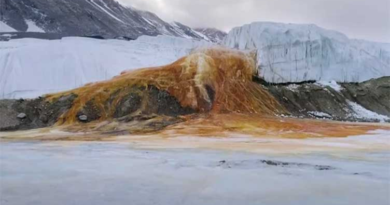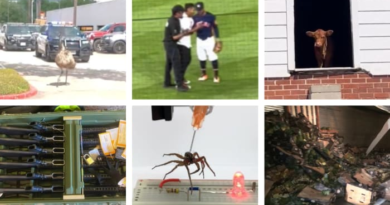Weird West Texas What's the story behind Cadillac Ranch? – LubbockOnline.com
Cadillac Ranch is one of the country’s most famous roadside attractions, gathering roughly 2 million visitors annually. The landmark along Interstate 40 near Amarillo has also earned billing in several pop-culture references and has been the face of social justice activism in recent years.
So, what’s the story behind it?
Before I drive in, let me introduce myself: I’m Brandi D. Addison, the regional agriculture and natural resources reporter for the USA TODAY network in West Texas, and this is the introductory column to our newest series, “Weird West Texas.”
Each week, we will explore some of the most odd, eccentric and just plain weird things in our region — from the state’s northernmost town of Booker down into the Big Country, westward to the Permian Basin and all the way into the Rolling Plains.
This week, we’re exploring the history of the Cadillac Ranch and the fame that’s rolled in over the years.
One of the state’s most photographed landmarks, Cadillac Ranch is an art piece from San Francisco collective Ant Farm. The avant-garde duo staged the Cadillac Ranch Show in the mid-1970s: A row of 10 vintage Cadillac models, from 1949 to 1963, seemingly bury their noses into the ground at a 60-degree angle (supposedly to match that of the Great Pyramid of Giza in Egypt).
Eccentric businessman and Amarillo local Stanley Marsh 3 commissioned the public art installation that increasingly brought publicity to the lackluster prairie that the Texas Panhandle once was.
Marsh was long known in his hometown for his pranks and flamboyant personality, and Cadillac Ranch served a piece to that puzzle. Marsh, who died in 2014, mostly stayed out of the spotlight until he faced indictment alleging he molested teenage boys later in life, according to archives from the Lubbock Avalanche-Journal.
For more than two decades, the installation sat in its original spot in a wheat field along Route 66, one of the country’s most famous highways. But as Amarillo’s borders expanded along with its population, Cadillac Ranch moved two miles westward to a cow pasture just outside of town along Interstate 40.
Nearing its half-century mark, the art still stands in its original condition — almost. Now covered in graffiti, the cars have become a canvas for the world and rarely go more than a few hours before they’re decorated with new art. Plus, in 2019, one was set ablaze but came out with most of its structural integrity intact, according to archives from the Amarillo Globe News.
Presumably neither Ant Farm nor Marsh expected the Cadillac Ranch to become the icon it has today.
In recent years, the installation has become a champion for social justice activism. And during the peak of the Black Lives Matter protests in 2020, visitors painted the Cadillacs to support the movement, while occasionally, during gay pride celebrations, it is briefly transformed into a vibrant rainbow.
Inspiring the far-lesser-known Slug Bug ranch about 35 miles east in Conway, the Cadillac Ranch has also taken prime seating in popular culture.
On his 1980 album The River, Bruce Springsteen wrote a song called “Cadillac Ranch,” which the Nitty Gritty Dirt Band and Status Quoto later covered. The roadside attraction has also served as background for many music videos, including James Brown’s “Living in America” and Cage the Elephant’s “Ain’t No Rest for the Wicked,” as well as the final music video of Brooks and Dunn in “Honky Tonk Stomp.”
In the 2006 animated Pixar film, Cars, their version of Cadillac Ranch called the “Cadillac Range” shows a mountain formation imitating the installation — and the film’s ending credits acknowledge the Ant Farm collective. The animated backdrop was later constructed into the centerpiece of Cars Land at Disney California Adventure. (Visit the Disneyland website for reference.)
The landmark also made it into the 1990 memoir 12 Days on the Road: The Sex Pistols and America, sharing the experience of when the Sex Pistols passed by the Cadillac Ranch — which still, at the time, was off Route 66 — and lead singer Johnny Rotten sarcastically remarked about it as a “stirring work.”
In all its glory, one thing has become clear over the years: Cadillac Ranch is no longer simply the work of three collaborators who wanted to bring some funk to a colorless town.
Now, it’s become an opportunity for all to embrace their creativity and express their beliefs (including the arsonist, who clearly wanted to send a message).



